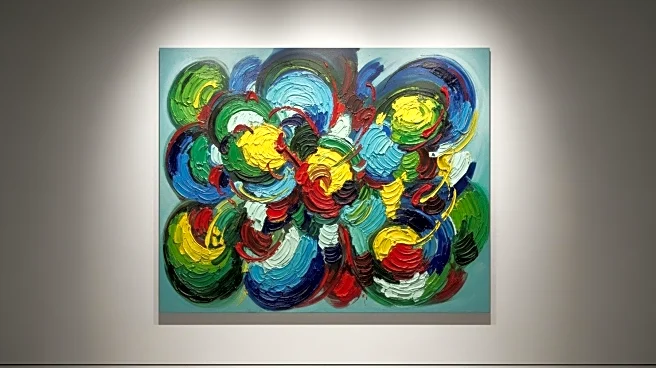What's Happening?
The Gaza Biennale has arrived in Brooklyn, showcasing the works of 25 Palestinian artists in a one-room exhibition at the nonprofit art venue Recess. Titled 'From Gaza to the World,' the exhibition serves as the New York pavilion of a roving biennale launched in 2024 by the Forbidden Museum of Jabal Al Risan. The exhibition bears witness to the ongoing Israel-Gaza War, highlighting life under bombardment, famine, and displacement. Despite the challenges, artists continue to create work, expressing their experiences and struggles. The exhibition includes documentation of art produced in Gaza, such as printouts of paintings and facsimiles of artists' notebooks, due to the difficulty of transporting artworks from the region.
Why It's Important?
The exhibition underscores the resilience and determination of Palestinian artists to share their narratives and experiences despite the ongoing conflict. It raises awareness of the humanitarian crisis in Gaza, where infrastructure has been destroyed and nearly 90% of the population displaced. The exhibition also highlights the challenges faced by Palestinian artists in presenting their work globally, raising questions about the accessibility and endurance of art under siege. By bringing these works to an international audience, the exhibition fosters dialogue and understanding about the situation in Gaza and the broader implications of the conflict.
What's Next?
The exhibition 'From Gaza to the World' will be on view in Brooklyn through September 14, with an abbreviated version from September 18 to December 20. Future iterations of the biennale are planned in various international locations, including Walla Walla, Washington; Istanbul; Athens; Valencia, Spain; Sarajevo; and Berlin. These exhibitions aim to continue raising awareness and fostering dialogue about the situation in Gaza and the resilience of its artists.
Beyond the Headlines
The exhibition challenges perceptions of art as 'impotent and frivolous,' highlighting its vital role in expressing and preserving cultural identity and experiences amid conflict. It emphasizes the power of art to communicate and endure despite adversity, echoing sentiments that art and poetry are necessities for existence, as articulated by figures like Audre Lorde.

